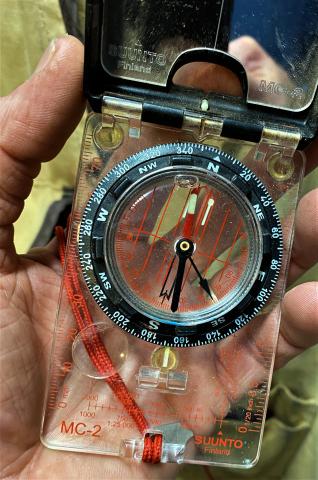Finding your way
By: Steve Roark
Volunteer, Cumberland Gap National Historical Park
Humans must have a hardwired wanderlust. For generations our ancestors were always moving on to new places, and this continues today.
On average, Americans will live in five homes in their lifetime, and in between we take vacations to see new places. Nowadays we have road maps, phone apps and global positioning system (GPS) devices to show us how to get to anywhere we wish.
Before satellites, we depended on the Earth’s magnetic core to determine direction using the ever-handy compass to point out north.
Without a compass, one must be more observant to figure out direction. The North Star, Polaris, stays fixed in the sky while all other stars move.
To find Polaris, look for the big dipper, which is easy to find in the northern sky. With your eye extend a line through the outer two stars of its ladle until it crosses a star, and that’s Polaris.
Stars in general can be used for direction because they drift from east to west across the sky. Keep your eye on one bright star near the horizon. If after a while it appears to rise, that’s east. If it drops towards the horizon, that’s west.
On sunny days you can use sun movement to determine direction. Place the end of a straight stick in the ground in such a way that it casts no shadow (the stick is pointing directly at the sun). Wait until the stick makes a shadow 6 inches long or so. The end of the shadow is now pointing east. If you’re old fashioned and still have a watch with hands, you can use it as a compass. Place the watch face up, with the hour hand pointing toward the sun. South will be halfway between the hour hand and 12 o’clock.
Other ways to tell direction involved observing nature, perhaps not as accurate but can still give you a general idea.
If you see a tree or small rock with heavy moss on one side, chances are it’s growing on the north side of the tree where it’s cooler.
Sugar maple often has black areas on its bark where the sapsucker (woodpecker family) has drilled a horizontal series of holes to feed on the sap. The blackened bark is more likely to be on the south side of the tree because it receives more direct sun in the Spring, which warms the bark and increases sap flow.
If you see a tree stump, its rings will probably be further apart on the sunnier side, which is south. The tops of pine trees often point east. Our prevailing winds are from the southwest, so face the wind and west is probably slightly to your right. This one is tricky and only works when no fronts are moving through and changing wind direction.
- Log in to post comments
